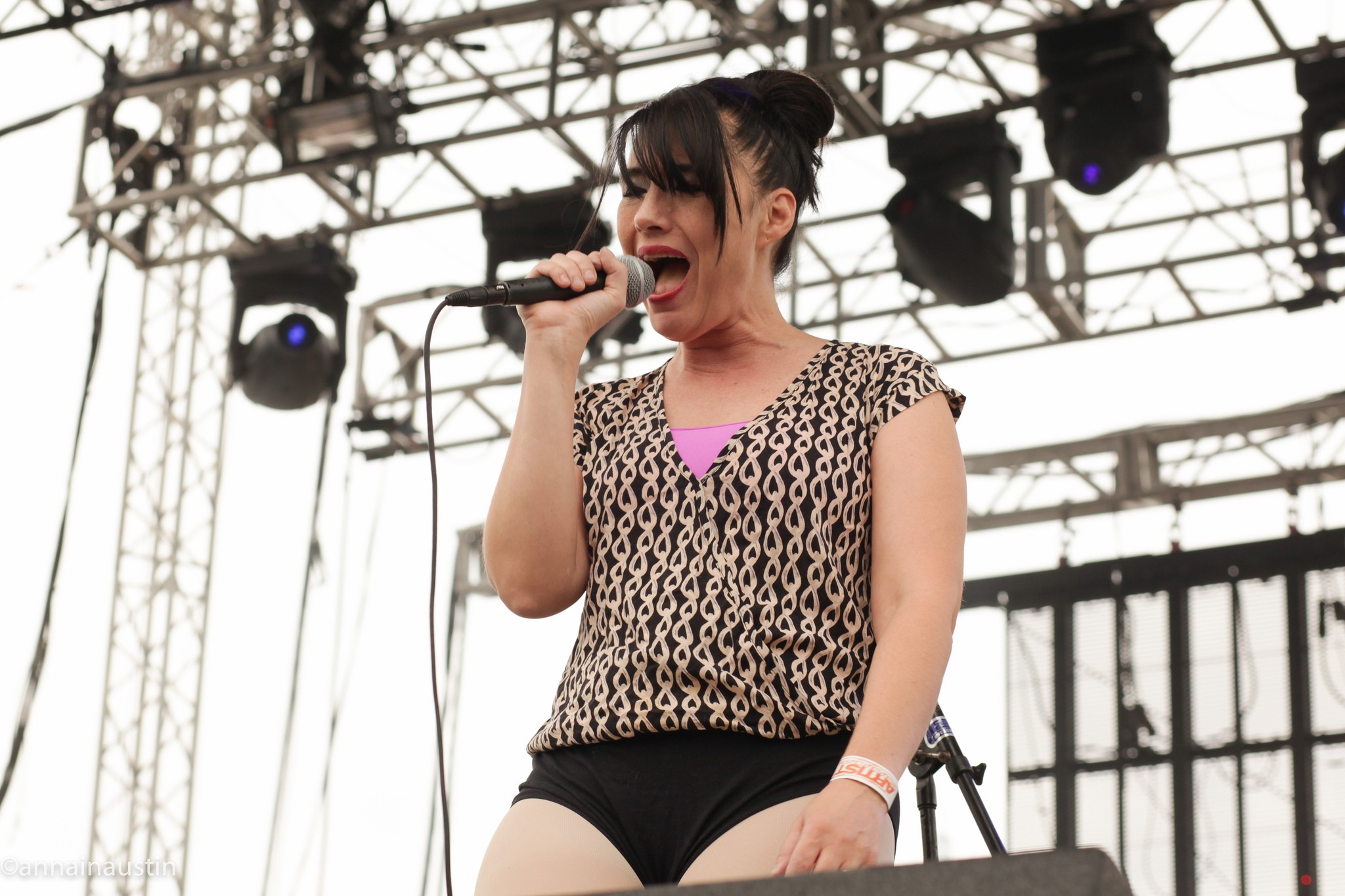Books & Culture
Kathy Acker Is the Secret Mom of Every Female Artist
A new biography by Chris Kraus shows Acker at the head of a feminist family tree

Kathy Acker and Chris Kraus are two of America’s most misunderstood and misinterpreted writers, born out of the last days of an affordable New York City we can’t stop eulogizing. They are preserved side-by-side in the amber of cult status, and not only because they have shared lovers, friends, or artistic sensibilities (Chris Kraus even owns a rare William S. Burroughs print that was given to Acker as well). Their personal narratives also connect them. Both were once invisible strivers, and within very different timeframes, they found the open arms and gaping mouths of a fresh-faced audience.

So it’s fitting that Kraus is now Acker’s biographer. Her After Kathy Acker shows the cult favorite not only as an artist in the making, but as an autofiction instigator and satirist ahead of her time. And it also demonstrates that Kraus and Acker’s spiritual connection is shared much more broadly than previously acknowledged — shared, perhaps, among all misunderstood women artists. Acker, as an outsider in the literary scene and a loner in her personal life, gave birth to a new generation of female creators, giving them permission to take risks and experiment. This book will enlighten anyone who, knowingly or not, was fed from Acker’s umbilical cord.
Acker styled herself as an “anti-nuclear family writer.” The formal structures and “post-punk” style she became famous for were in direct opposition to the cozy images of courtship and childrearing. Her true home, her religion, sat on her bookshelves; she worshipped by collaging herself with each page she has ever read. But in her work, as we see through Kraus’s biography, she was (perhaps in spite of herself) both a daughter and a mother. She was a daughter consumed by the chaos of her psychic welts — a mind forged into a sharp spear of control and discipline to offset the lack of mirroring from her family. Acker’s was an “identity full of holes” in need of books to fill in her foundation to prevent the feeling of constant free-fall. She cannibalized her idols, birthing herself from the art she consumed like a maggot emerging from its host.
And she was a mother because Acker was always in conversation with other writers, doling out permission slips to future generations to reach for the words they desired and own them until they could find their voice. The feminist musician Kathleen Hanna recalled being deeply changed by a workshop led by Acker in Seattle, realizing that “I (too) couldn’t write from a singular perspective, I couldn’t write an open and closed narrative. I just sort of wrote this stuff that was from all different kinds of identities, and I thought I was nuts and I would just hide that shit in my bottom drawer.” According to Hanna, Acker told her to give up on making it as a writer and start a band if she wanted to be a catalyst for change; her teacher had “no maternal bones in her body,” Hanna said, but she was prophetic and profound even if not nurturing. In a parallel process so often indicative of Acker’s almost psychic tether to her audience, she herself has said that writing was a way of managing symptoms of a mind on the brink of a possible schizophrenia. Acker searched for the fascia in everything, and we can’t tell the head from the tail in her vaudevillian twists and turns as she looks for the right landing strip on the writer’s tarmac. Acker needed the support and guidance her exterior and performative hyperbolism seemingly denied. She wrote Bernadette Meyer postcards as a young poet, detailing her hungry pursuits, minor triumphs and disappointments with her literary community was a way of accessing an identity, an ever evolving and pliable self that could both mold and disrupt once allowed to ooze in through the cracks.
Acker was always in conversation with other writers, doling out permission slips to future generations to reach for the words they desired.
Was it possible for Acker to get some distance from the world and her fixed persona in it without being deemed a castrating bitch, without becoming too scary and confusing in her stories? She used a stand-in to challenge the binary that says we must either be “real” and confess, or create someone or something out of whole cloth. Invent, or be yourself, but never shall the two coexist: this is the lie Kathy Acker wouldn’t live with. Acker could not, and should not have to, pick between poetry, fiction and nonfiction. There has never been a stronger case made for a fourth genre revolution than in reading After Kathy Acker.
“I was unspeakable, so I ran into the language of others.” With that one sentence Acker lays bare the political necessity of thievery and a feminism that reveals the struggles of achieving a shifting collectivist goal. She also recasts what vulnerability and the urges towards perfection look like side-by-side, plugging up the glory holes of our objectified bodies with shreds of boring fiction. With “unspeakable” she re-stages and fairytales the stable and oppressive text into a moving river anyone can step into more than once. Acker then de-feathers the heroic father lie, taking on welcomed self-curated constraints to subvert the violence of alienation and otherness. As Caroline Bergvall notes of this kind of Ackerian master trick: “One is not oneself. One has not one self. One’s speech is that of others.”
Why People Don’t Like “I Love Dick” (Hint: Because It’s About Women)
In Kraus, Acker finds not only a biographer and a spiritual daughter but also a true mother, someone who gathers up her lies and truths alike with equal regard. Kraus has recently said in an interview that one can only really get a hologram of Acker, and the one she evoked may not please her. However, this is a family portrait Acker deserves, because Kraus dug through every scrap and postcard and assembled a tapestry worthy of this lonesome goddess of war. We now know of every boyfriend, every foe, every love letter, every flat she occupied, and every setback she often created for herself, such as her stubborn refusal to treat her breast cancer with western medicine, eventually dying in 1997 at an alternative clinic in Tijuana. She was only 53 years old.
In Kraus, Acker finds not only a biographer and a spiritual daughter but also a true mother, someone who gathers up her lies and truths alike with equal regard.
Mostly, we see that Acker wasn’t simply hungry for an audience like every artist out there. She was starving for her own cavalry of readers to provide her with unconditional love. Acker wanted her punch to be met with a kiss, a goal she never satisfactorily achieved. The men she pursued with her intellect ran away, or they stayed and became her celibate companions. She spoke at length in interviews and correspondences about how her female gaze and promiscuity only brought on constant rejection and compromised her reproductive health as a secondary blow. Acker didn’t break out of the traditional structure of male dominated relationships in which women had much more at stake physically, emotionally and mentally even though she aggressively tried in ways spanning from her sartorial choices of leather and chains to her soldiering on with painful sex through bouts of pelvic inflammatory disease to sustain a connection.
With her first book, I Love Dick, Chris Kraus managed to give women the right to be wrong, asking, “Why does everybody think that women are debasing themselves when we expose the conditions of our own debasement? Why do women always have to come clean?” She has blessed us with a feminism of failure and longing. While Kraus had to work against being pigeonholed as the wife of so-and-so at one time, Acker wanted more than anything to be attached to a committed and powerful man and never seemed to fear how her writing might be perceived in contrast to a mate’s. Her biggest allies, and automatic enemies, were all women. Acker killed off her relationship with Constance DeJong, the writer of Modern Love, a book she surely related to and wished had been fed through her pen, after DeJong upstaged her at a joint reading. It was petty and childish, but being a hurt little kid wasn’t something she managed to outgrow. And so, storming off, leaving, moving, and constantly traveling ultimately became something Kathy Acker was very good at doing. She continued to symbolically stomp away from her mother. But tantruming to avoid the cliché of becoming her mother with such blind fury yielded the opposite result, especially towards the end of her brief life.
Tantruming to avoid the cliché of becoming her mother with such blind fury yielded the opposite result.
It makes sense that Acker couldn’t stay in the claustrophobia of the literary world, or maybe anywhere, and fell in love with her motorcycle the way young girls tend to become obsessed with horses. She was a blue ribbon showstopper herself, and knew it, and needed everyone else to mirror that image back to her. The legendary LA punk singer Exene Cervenka has said that it’s women who exude power on stage in a direct or exaggerated way are rejected as too angry and too scary, when emotion is completely beside the point. Acker inched towards the kind of rock star status women were beginning to enjoy right before her untimely death and was welcomed into the queer San Francisco community with ease and eventually recorded a spoken word album, Redoing Childhood (Kill Rockstars), with the seminal band Tribe 8. Acker’s less than nurturing nudge to Kathleen Hanna to use music as a tool to reach, or create, as she eventually did, a wide feminist audience, generously paid off, and continues to have a cultural ripple effect. When women in the nineties, like L7, The Lunachicks, Bratmobile, and Bikini Kill got on stage wearing combat boots and pulling out their tampons to throw them into a crowd of sweaty meatheads shouting slurs and telling them how much they sucked, Kathy Acker was the pin in their hand grenades — none of the maternal bones, but all of the connective tissue birthing us angry girls.








